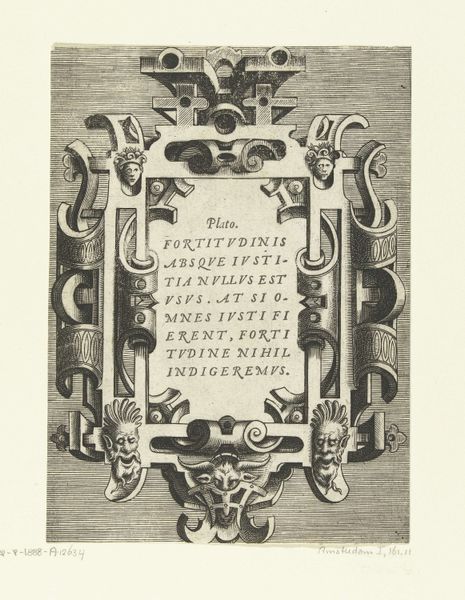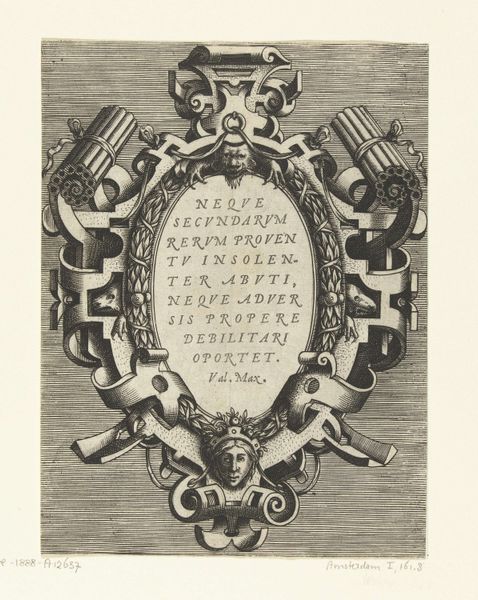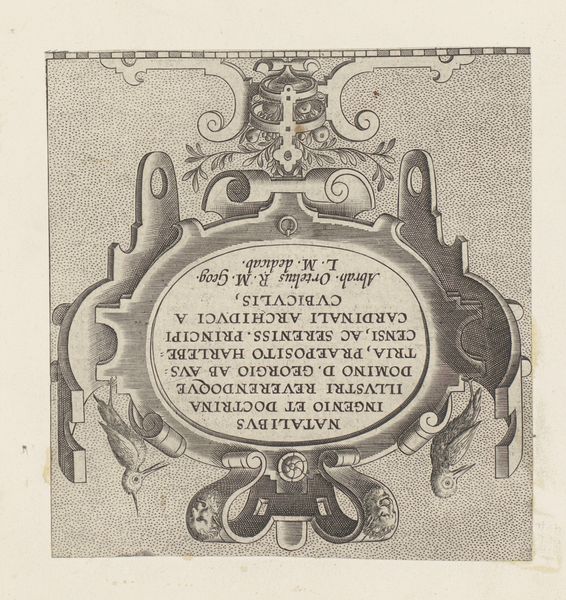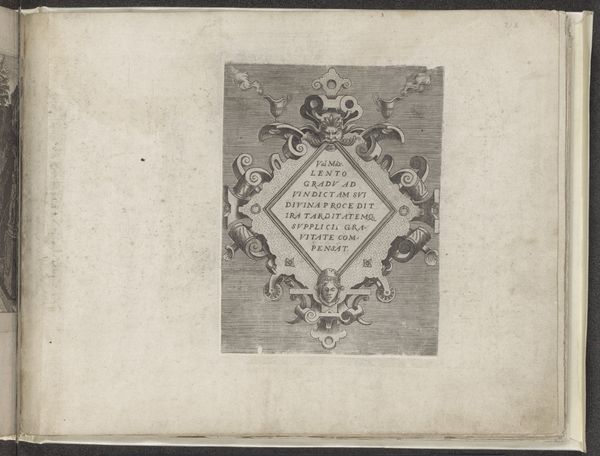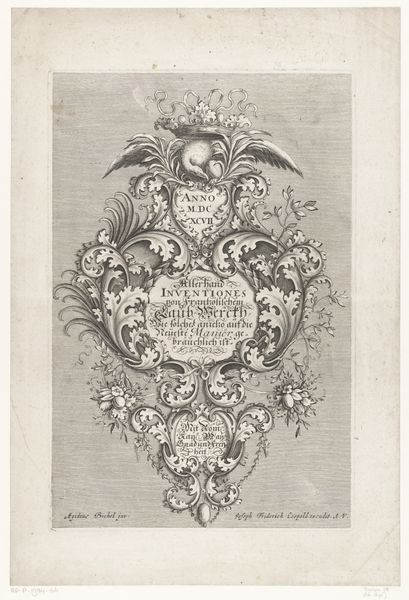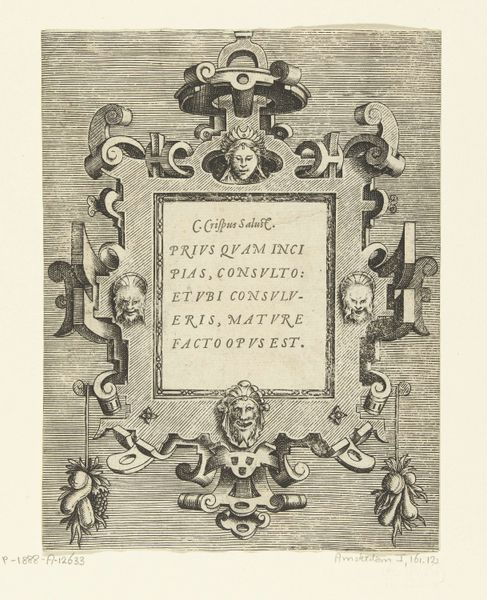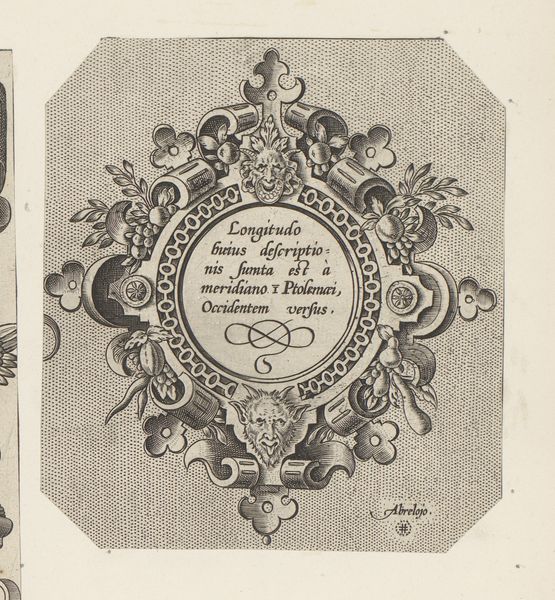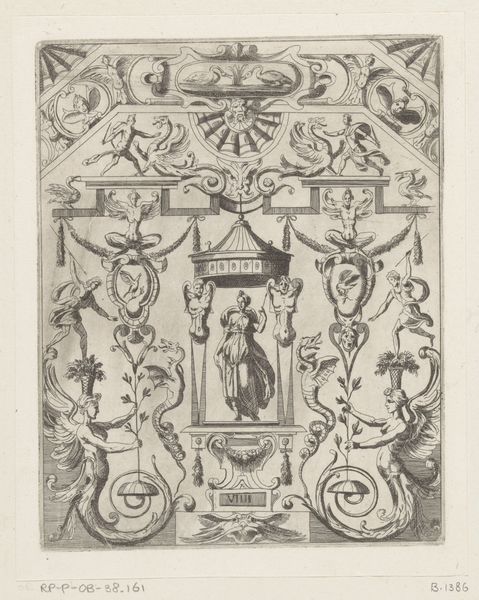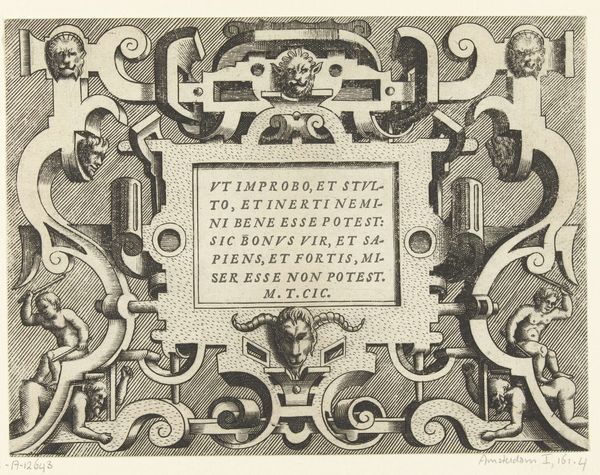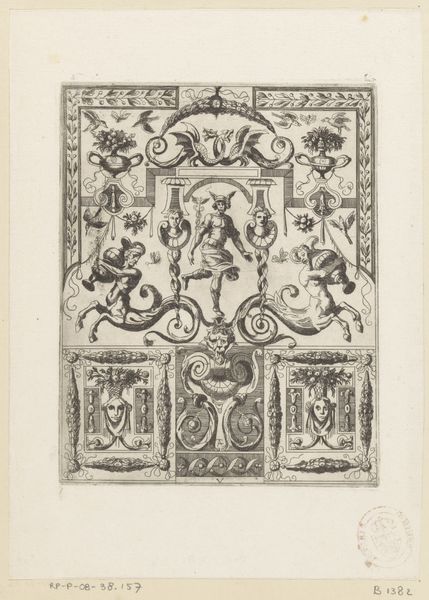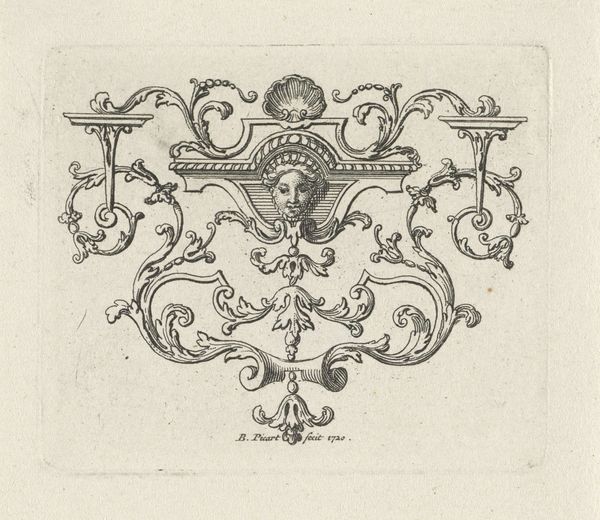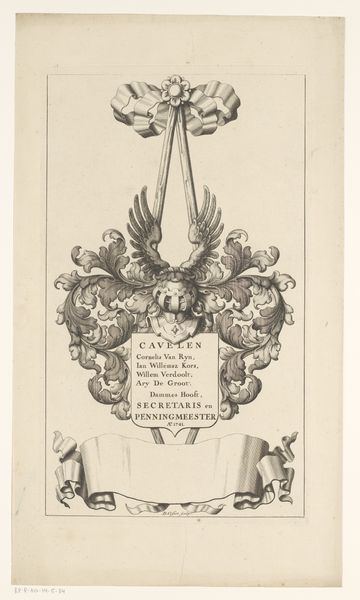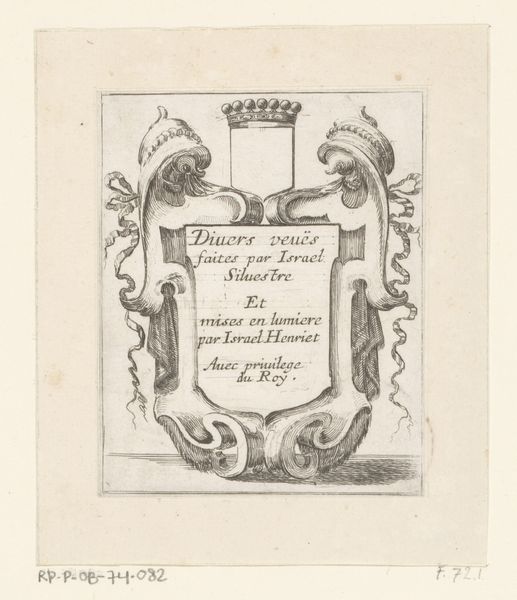
graphic-art, print, engraving
#
graphic-art
#
historical design
# print
#
old engraving style
#
11_renaissance
#
traditional style
#
history-painting
#
engraving
Dimensions: height 175 mm, width 133 mm
Copyright: Rijks Museum: Open Domain
Curator: Here we have a remarkable engraving by Frans Huys from 1555, titled "Ruitvormige cartouche met een citaat van Valerius Maximus," housed here at the Rijksmuseum. The inscription is framed by elaborate ornamental details. What strikes you first about it? Editor: It’s undeniably striking, the density of line work! The way the light barely glances off the page must almost turn this graphic plane into something velvety, a textile even. I find myself wanting to feel the pressure of the engraver's tool. Curator: Indeed, Huys demonstrates masterful control of line. Notice how the diamond cartouche containing the text serves as the central visual anchor, with swirling foliate motifs emanating outwards. The interplay of positive and negative space is particularly effective. Editor: Those foliate motifs, though! I see scrolls that almost mimic industrial gears and the smoking lamps feel both devotional and somehow mechanized. It's like the early modern world wrestling with itself—tradition and progress caught in the same breath. What was the practical application of the piece at the time? Curator: Prints like this served multiple purposes. Certainly, it conveyed classical knowledge with the quote from Valerius Maximus which translates roughly as “Divine wrath proceeds slowly to its vengeance, but compensates for its tardiness with the severity of its punishment." However, it also functioned as a decorative element, showcasing the engraver’s skill. One must consider how the materiality of dissemination granted this type of graphic art access to an evolving audience that differed from manuscript illumination. Editor: That contrast interests me. So much attention on skill, making such laborious objects available so widely! Consider all that metal platework to translate these humanist ideas—I can't help but imagine a printmaker's grueling labor contributing directly to the aesthetic expression of these values, one impression at a time. Curator: And that connection—the transmission of classical wisdom, mediated through the artisan's labor—resonates deeply still today. Its elegance derives not just from compositional ingenuity, but, as you pointed out, also from an intensity of meticulous technique. Editor: Seeing the world translated through that care certainly heightens its presence. I hadn't fully considered how such seemingly straightforward engravings also bear evidence of such meticulous labor. Curator: Precisely, allowing the graphic to not just speak, but materialize the cultural values from which it originated.
Comments
No comments
Be the first to comment and join the conversation on the ultimate creative platform.
